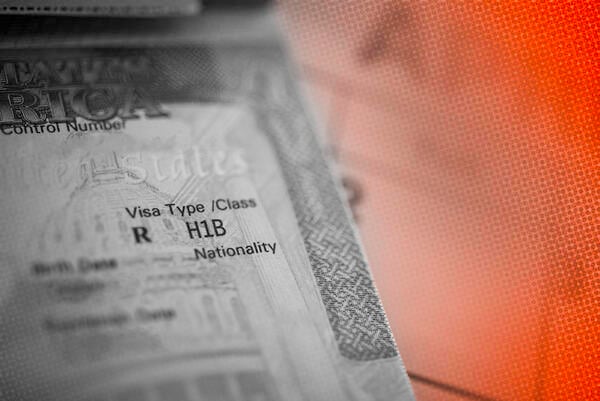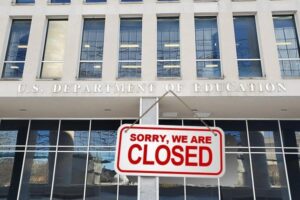
4 Charts Breaking Down H-1B Visas and Higher Ed
Trump officials argue that the H-1B program is being abused.
Photo illustration by Justin Morrison/Inside Higher Ed | Evgenia Parajanian/iStock/Getty Images
The Trump administration’s push to require employers to pay a $100,000 fee in order to secure an H-1B visa for foreign workers could imperil thousands of jobs at colleges.
As of June 30, U.S. colleges and universities employed more than 16,000 workers on approved H-1B visas—making up about 5 percent of the total for fiscal year 2025. The H-1B program gives employers a way to recruit and hire foreign talent when they can’t find acceptable domestic applicants. The Trump administration has argued that employers are abusing the program and using it as a way to avoid hiring American workers. But employers counter that the visa program is necessary to attract skilled workers.
To qualify for an H-1B visa, a worker must be employed in a “speciality occupation,” meaning it requires “highly specialized knowledge,” and have at least a bachelor’s degree that’s related to their specialty, according to U.S. Citizen and Immigration Services. The professional, scientific and technical services sector, which includes computer services and engineering, has the most H-1B visas so far in fiscal year 2025 at 129,007. A vast majority of the workers who have such a visa are from India. Before the administration increased the fees, applicants paid $2,000 to $5,000.
For universities, the program is a way to hire academic staff and researchers or doctors. In many instances, the workers are connected to an institution’s medical center, said Hanan Saab, the associate vice president for government relations and public policy at the Association of American Universities.
An Inside Higher Ed analysis of federal data for fiscal year 2025 offers a snapshot at the prevalence of H-1B visas at colleges and university. The data show that at least 930 colleges and universities had at least one employee with an H-1B visa as of June 30. The average for institutions on the list was about 18 visas. About 843 institutions had zero to 49 approved visas.
Nearly half of the 16,797 approved visas were at just 50 institutions. All but two of those were classified as R-1s; the other two were medical centers. Among that top 50, the average number of approvals was 167 per institution.
The top 100 universities for approved visas hold about 70 percent of all those issued to colleges and universities in the last year.
The president’s proposal, outlined in a presidential proclamation, doesn’t apply to current H-1B visa holders, and it’s unclear if universities will have to pay the fee for new visa applications. The government limits the number of new visas to 85,000 annually. But universities, along with nonprofit research institutions and national labs, aren’t subject to the cap. Employees with an H-1B visa can stay and work for up to six years before they have to reapply.
Saab noted that the directive allows agencies to exempt certain individuals, companies or entire industries from the fee if the secretary of homeland security determines that hiring foreign talent “is in the national interest and does not pose a threat to the security or welfare of the United States.”
“We are very much of the mind that any of the hires an institution of higher education might be making for research purposes or medical support services are very much in the national interest,” Saab said.
She hopes that higher ed won’t get swept up in the effort that appears to be geared toward corporate America. (Trump officials specifically called out “big tech companies or other big companies training foreign workers” in their comments about the $100,000 fee.)
Key federal agencies haven’t said how they’ll carry out the president’s proclamation, which took effect Sept. 21. But if the fee and cap do apply to colleges, that will likely hamper their ability to fill key roles on campuses and in medical centers, from lecturers to researchers to physicians. Experts don’t think many colleges will be able to afford the $100,000 fee, especially as several institutions with the most approved H1-B visas are grappling with other financial headwinds, cutting staff and freezing spending.
The National Postdoc Association noted in a statement that “thousands of international postdocs use H-1B visas to apply their world-class expertise across industry, academia, and other research institutions.”
“If implemented, the administration’s proclamation to impose a $100,000 fee for new H-1B visas would create an enormous barrier for employers seeking to attract top talent from around the world,” the statement said. “America’s competitors must be celebrating this radical policy position that lets them steal away extraordinary workers who would otherwise bring their skills to the United States.”
Source link


